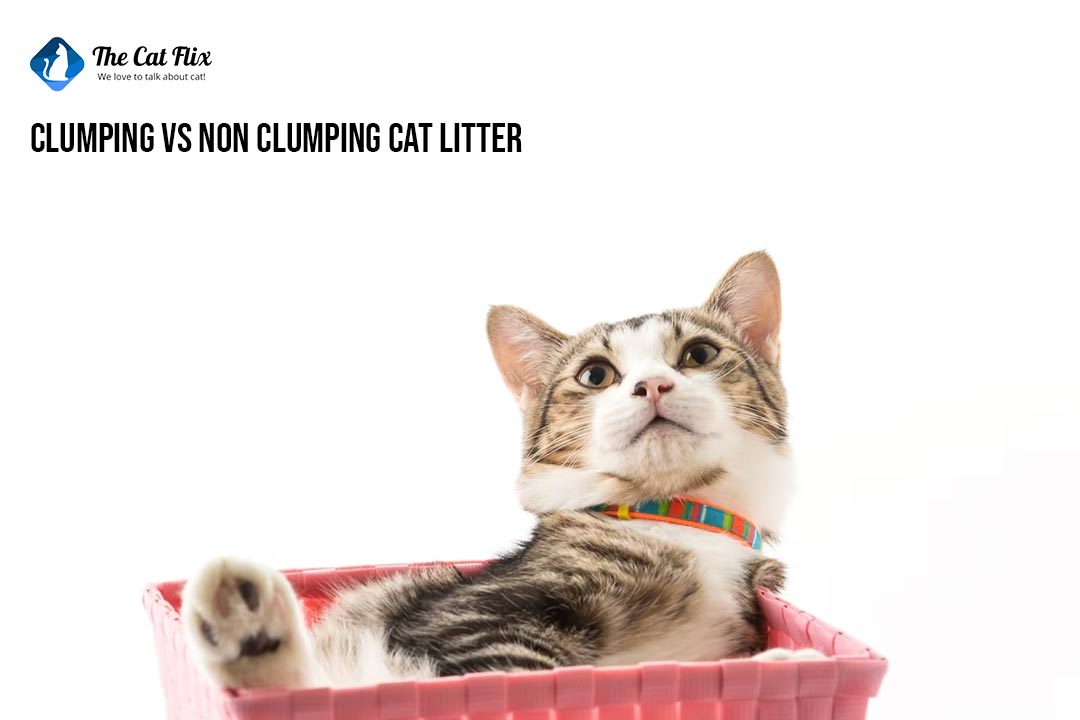Did you know that cat litter can affect your cat’s urinary tract health, behavior, and odor control? Choosing the right type of cat litter can make a big difference for your cat’s well-being and your own satisfaction.
For that, you may often be faced with a multitude of choices. Two popular options are clumping and non-clumping cat litter.
But what exactly are the differences between clumping Vs non-clumping cat litter, and how do they affect your cat’s health and happiness? Let’s find out.
What is Clumping Cat Litter?
Clumping litter is a type of cat litter that forms solid clumps when it comes into contact with liquid, such as urine or water.
This makes it easier to scoop out and dispose of the waste, leaving behind a clean and fresh litter box.
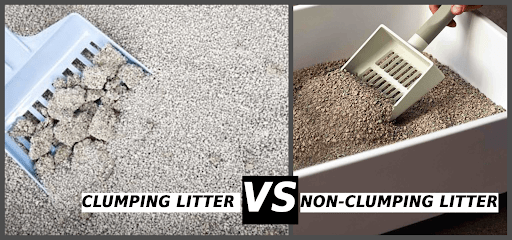
Clumping litter is typically made from a variety of materials, including clay, silica gel, and plants.
How does clumping cat litter work?
Clumping litter is made up of many elements that work together to generate clumps. One of the most common components is sodium bentonite, a very absorbent kind of clay.
When sodium bentonite is exposed to water, it swells and produces a gel-like material. This gel retains the liquid and stops it from spreading, causing the clumps.
What is Non Clumping cat Litter?
Non clumping litter is a type of cat litter that does not form solid clumps when it comes into contact with liquid, such as urine or water. Instead, it absorbs the liquid and spreads it throughout the litter.
Non clumping litter is usually made from materials that are not clay-based, such as corn, wood, paper, crystals, or grass.
How does non-clumping litter work?
Non-clumping litter absorbs liquids and feces into separate litter particles. The particles form a solid mass, yet they do not cluster together.
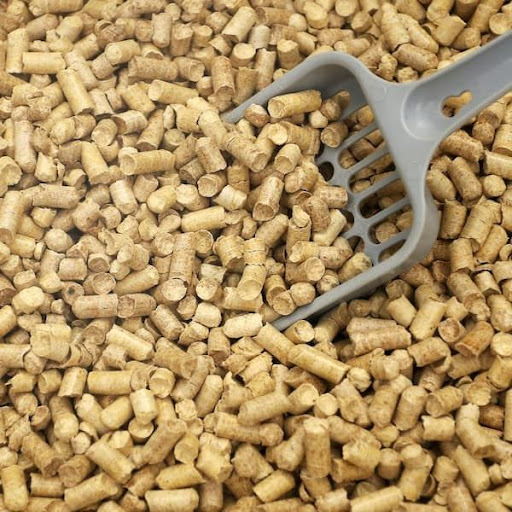
Pros and Cons of Clumping and Non Clumping cat Litter
Clumping Litter
Pros-
- Easy to scoop and dispose of the waste.
- Reduces odor by trapping the smell inside the clumps.
- Made from natural materials, such as bentonite clay.
- May contain other ingredients to enhance performance.
- More economical than non-clumping litter because you do not need to empty the entire litter tray as often.
Cons-
- Clumping litter is typically more expensive than non-clumping litter.
- Dusty and may cause respiratory problems for some cats or humans.
- May get stuck to cats’ paws and track around the house.
- Not suitable for kittens or cats with allergies or asthma.
- Clumping litter can expand in the digestive tract, which can cause blockages.
Non Clumping Litter
Pros-
- Non-clumping litter is typically less expensive than clumping litter.
- Lightweight and easy to carry.
- Good choice for kittens, as they are less likely to eat it than clumping litter.
- Non-clumping litter can be disposed of in the trash, while clumping litter should be flushed down the toilet.
- Less dust and tracking than clumping litter.
- Lasts longer.
Cons-
- Does not control odor as well as clumping litter.
- Requires more frequent changing and cleaning.
- May not suit some cats’ preferences.
- Not recommended for cats with urinary tract problems.
Clumping Vs Non clumping Litter: Which one is Better?
The best type of litter for you will depend on your individual needs and preferences.
If you are looking for a litter that is easy to clean and has good odor control, then clumping litter is a good option.
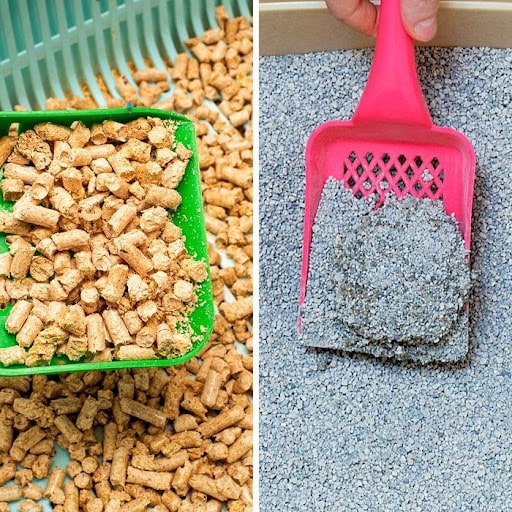
However, if you are on a budget or have a cat who is prone to eating their litter, then non-clumping litter may be a better choice.
Here is a table that summarizes the advantages and disadvantages of clumping and non-clumping litter for you and your cat’s preference-
| Factor | Clumping litter | Non Clumping litter |
| Cost | $15-$20 or more, per 10 pound bag | $10-$15 or below $20, per 10 pound bag |
| Environment | Not as eco-friendly or biodegradable | More environmentally friendly, made from renewable resources |
| Hygiene | More hygienic | Less hygienic |
| Change Duration | Can last up to 2 weeks before needing to be changed | Needs to be changed more often, about once a week |
| Lasting | Does not last as long as non-clumping litter, as the clumps disintegrate over time | Lasts longer than clumping litter |
| Cleaning Frequency | Less frequent cleaning required | More frequent cleaning required |
| Disposable | Flush down the toilet | Dispose of in the trash |
| Maintenance | Requires more maintenance (needs to be scooped out and disposed of more often) | Requires less maintenance |
| Multiple cats | Good choice for households with multiple cats | May not be as effective, but better for your single pet. |
Cat Litter 101: Find the Right Fit for Your Cat’s Preferences
Choosing the right cat litter for your feline friend is not a one-size-fits-all decision. Different cats may have different preferences and needs when it comes to their litter box.
Here are some factors to consider when selecting a cat litter:
Age
Kittens, senior cats, and cats with mobility issues may need a litter that is easy to access and gentle on their paws.
You may want to use a litter box with low sides and a soft, fine-grained litter for these cats.
Avoid clumping litters for kittens under three months old, as they may ingest the litter and cause intestinal blockage.
Health
Cats with health problems such as urinary tract infections, kidney disease, diabetes, or allergies may require a special type of litter.
For example, some litters can change color to indicate the pH level or blood presence in your cat’s urine, which can help you monitor their health.
Some litters are also hypoallergenic or dust-free, which can reduce irritation for cats with respiratory issues.
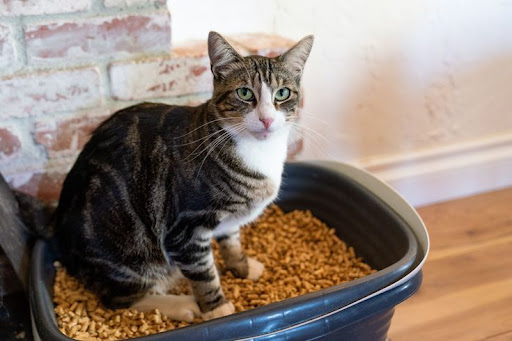
Preference
Cats have different preferences when it comes to the texture, scent, and shape of their litter.
Some cats may like fine-grained litters that feel like sand, while others may prefer larger granules that are less dusty and track less.
Even a few cats may be sensitive to scented litters or additives that mask odors, while others may not mind them.
Some cats may like round or flat pellets that are more natural and eco-friendly- just like my one, while others may find them uncomfortable or unappealing.
Single or Multiple Cat
If you have more than one cat in your household, you may need to use a litter that is designed for multi-cat use.
These litters usually have stronger odor control and clumping abilities, which can help keep the litter box fresh and clean for multiple cats.
You may also need to provide more than one litter box for your cats, as some cats may not like to share their box with others. A good rule of thumb is to have one litter box per cat, plus one extra.
Test and Retry
The best way to find out what type of litter your cat likes is to try different options and observe their behavior.
You can use two or more litter boxes with different types of litter and see which one your cat prefers.
Moreover, you can also look for signs of dissatisfaction, such as avoiding the litter box, eliminating outside the box, scratching excessively, or vocalizing.
If your cat does not seem happy with their current litter, you can try switching to another type gradually by mixing the old and new litters until your cat adjusts.
How do Litter’s Quality Affect Your Cat’s Health and Happiness
The quality of your cat’s litter can have a significant impact on their health and happiness. Poor quality litter can lead to a number of health problems, including:
- Respiratory issues: Dust from low-quality litter can irritate your cat’s lungs and lead to respiratory issues like asthma and bronchitis.
- Urinary tract problems: Some litters may be excessively acidic or alkaline for your cat’s pee, resulting in urinary tract infections and other issues.
- Skin irritation: Poor quality litter can cause redness, itching, and inflammation on your cat’s skin.
- Digestive problems: Some litters include chemicals that are toxic if consumed, such as silica gel. Poor quality litter can cause digestive issues in your cat, such as vomiting and diarrhea.
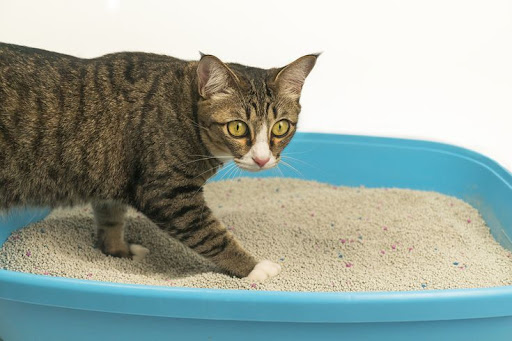
Aside from health issues, poor quality litter might make your cat miserable. Cats are highly clean creatures, and they will not use a filthy or unpleasant litter box. Poor quality litter can also trail easily, causing a mess in your house and stress in your cat.
High-quality litter, on the other hand, can improve your cat’s overall health and enjoyment. Normally, high-quality litter is:
- Dust-free: This is critical for cats that suffer from allergies or respiratory issues.
- pH balance: This aids in the prevention of urinary tract infections and other issues.
- Soft and gentle on your cat’s paws: This reduces skin irritation.
- Non-toxic: This is critical if your cat has a habit of eating litter.
- Forming clumps: This allows for simple waste removal and disposal, keeping the litter box clean and fresh.
What Litter Box Do Vets Recommend?
Veterinarians typically recommend litter boxes that are large enough for your cat to turn around in comfortably. A good rule of thumb is to choose a litter box that is 1.5 times the length of your cat’s body.
Furthermore, litter that is open-topped. Because, covered litter boxes can trap odors and make your cat feel claustrophobic.
Low-sided litter box or tray makes it easy for cats of all ages and abilities to get in and out of the litter box.
Another thing is Non-porous. This helps to prevent the growth of bacteria and other microorganisms. And most importantly, easy to clean. Choose a litter box that is easy to disassemble and wash.
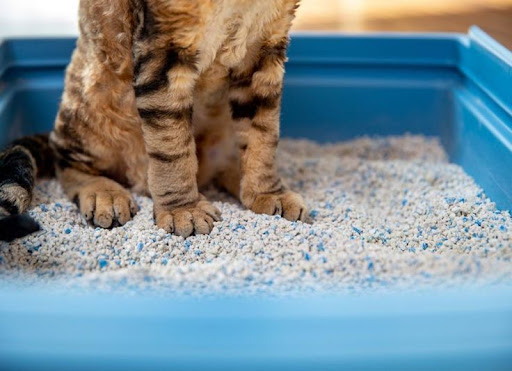
Here are a few specific litter boxes that are recommended by veterinarians:
- Petmate Basic Cat Litter Pan ( best for your wallet).
- Sterilite 105 Qt. Clear Plastic Latching Box (if you have a large kitty, it’s a go-to option).
- Frisco High Sided Cat Litter Box (overly good, i used it too)
- Frisco Multi-Function Covered Cat Litter Box (for covering purpose, it’s a good choice)
- Shirley K’s Senior Cat Litter Box (it’s ideal for a senior cat).
- Litter-Robot 3 (if you are busy like me, and want a Self-cleaning litter box, this is a helpful option but a bit pricey).
How to Maintain Clean and Fresh Litter Tray
To maintain a clean and fresh litter tray, you should:
- Scoop out the litter box daily. This will help to remove waste and prevent odors from developing.
- Completely empty and clean the litter box at least once a week. Use warm soapy water and a brush to scrub the litter box clean. Rinse the litter box thoroughly and let it dry completely before adding new litter.
- Use a high-quality litter. High-quality litter is more absorbent and controls odors better than low-quality litter.
- Place the litter box in a well-ventilated area. This will help to prevent odors from building up.
- Clean the surrounding area regularly. If litter gets tracked outside of the litter box, sweep or mop it up immediately.
- Use a litter box liner. This will make it easier to clean the litter box and will help to prevent bacteria from growing.
- Add baking soda to the litter box if your cat is not uncomfortable with it. Baking soda is a natural odor absorber and can help to keep your litter box smelling fresh.
- Use a litter box deodorizer. There are a variety of litter box deodorizers available on the market. Choose a deodorizer that is safe for cats and that is effective at controlling odors.
FAQs
Some most commonly asked question related to clumping and non clumping litter–
Can clumping cat litter cause constipation?
Yes. Clumping cat litter can cause constipation if they ingest it in large amounts. It expands in the stomach, which can block the digestive tract.
Are there any health concerns associated with clumping cat litter?
Yes. Clumping cat litter can also cause respiratory problems, allergies, or asthma in cats or humans if they inhale the dust from the litter.
It may also contain chemicals or additives that can irritate the skin or eyes of cats or humans.
Can I mix clumping and non-clumping cat litter?
It is not recommended to mix clumping and non-clumping cat litter. This can make it difficult for the clumping litter to form clumps, and it can also create a mess in the litter box.
Can I use non-clumping cat litter in an automatic litter box?
No, most automatic litter boxes require clumping cat litter to function properly.
Non-clumping cat litter does not form solid clumps that can be separated and removed by the automatic mechanism.
What happens if I use non-clumping litter in a litter robot?
Non-clumping litter will not be able to pass through the automatic litter box system, and it can clog the machine.
It will leave urine and feces mixed with the rest of the litter, creating a wet and stinky mess. This can damage the machine and require expensive repairs
Closure: Choosing the Best One!
In the great debate of Clumping vs Non-Clumping Cat Litter, the right choice ultimately depends on your cat’s preferences, your budget, and your cleaning routine.
Both types have their advantages and disadvantages, so make an informed decision that best suits your feline friend’s needs.
Whether you opt for the convenience of clumping or the affordability of non-clumping, a clean and comfortable litter box is the key to a happy cat.
So, which one are you thinking of buying, clumping or non clumping? Let us know in the comments!

